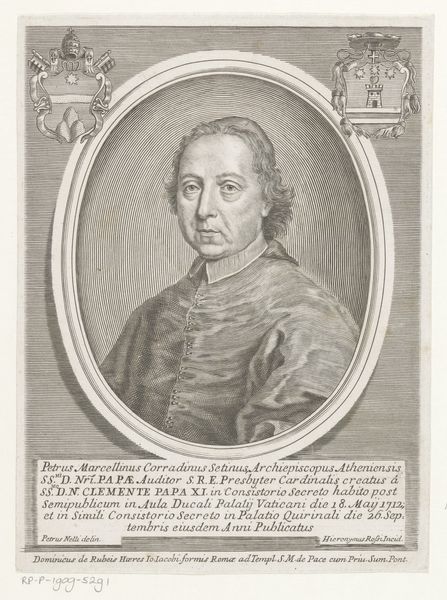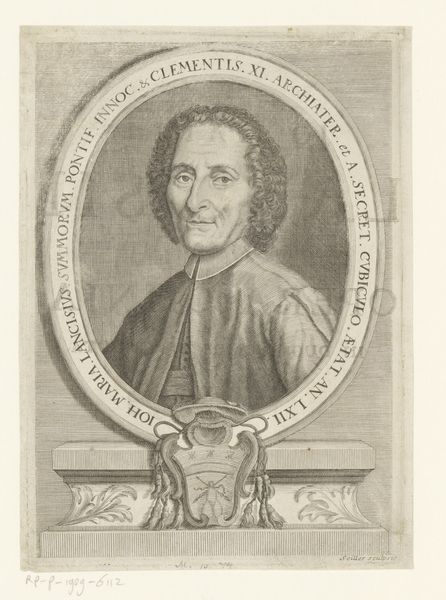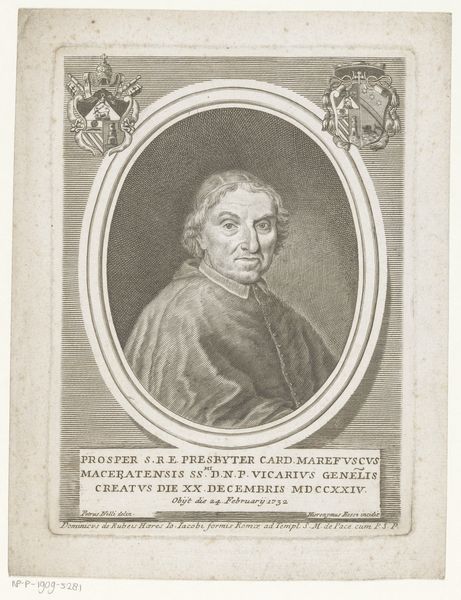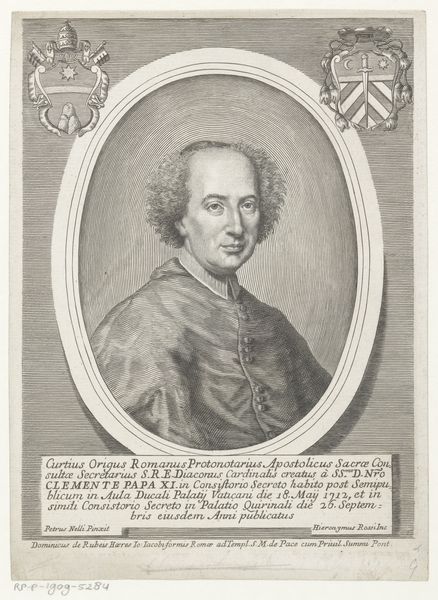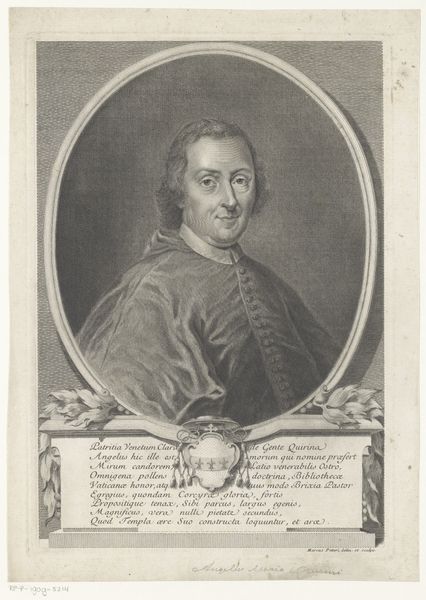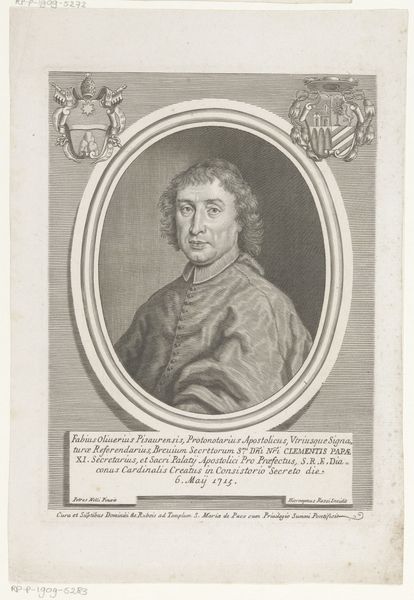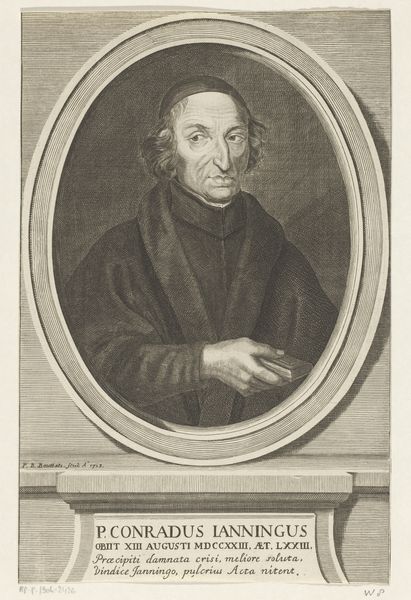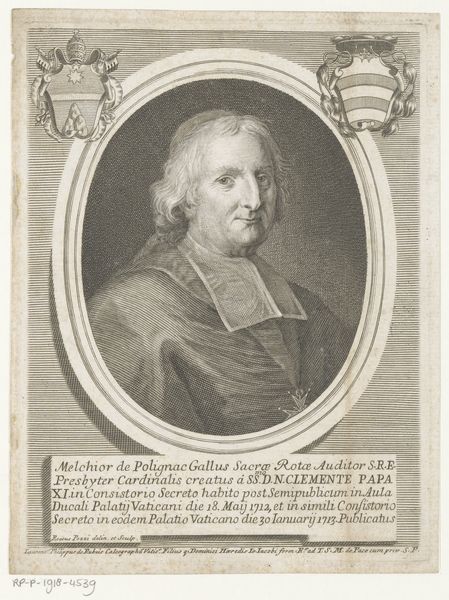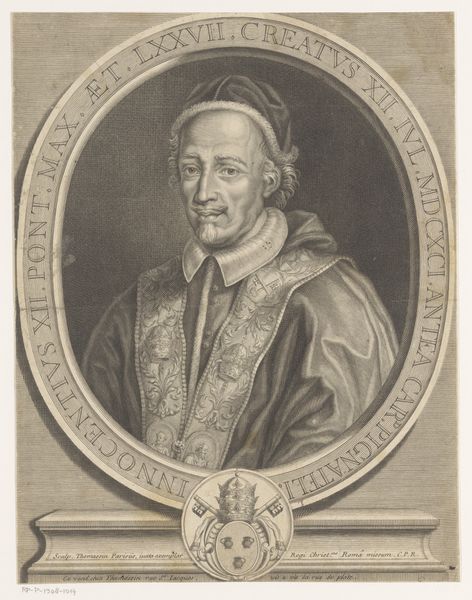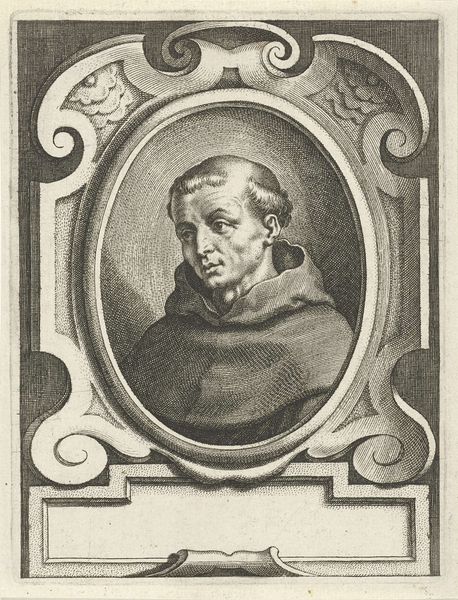
engraving
#
portrait
#
baroque
#
engraving
Dimensions: height 206 mm, width 155 mm
Copyright: Rijks Museum: Open Domain
Curator: We’re now looking at a striking engraving, dating roughly from 1724 to 1762, entitled “Portret van kardinaal Vincenzo Petra." It’s by Girolamo (II) Rossi and resides here at the Rijksmuseum. What's your initial reaction to this depiction? Editor: There's a severity, a kind of reserved intensity in the Cardinal's gaze. It makes me wonder about the power structures within which he operated and how they shaped his identity and perhaps this representation itself. Curator: Absolutely. It’s important to note the Baroque style which employs that dramatic flair to underscore authority. But let's look closer at the symbolism present. We have his coat of arms prominently displayed above his head. Can you deconstruct what these emblems convey? Editor: The coat of arms function as visual signifiers, reinforcing the Cardinal’s lineage and position within the Church hierarchy. Each element probably denotes specific family achievements and affiliations – a constant reminder of inherited power and privilege in that era. I also wonder how the use of engravings can tell a story in relation to mass reproduction and access for the collective in relation to the elite that are portraits such as this? Curator: Very insightful. The crispness of the lines, characteristic of engraving, enhances that sense of unwavering control, don't you think? This meticulous rendering mirrors the stringent social structures he inhabited, projecting an image of inviolable status and consequence. The stark use of dark and light creates contrast. Editor: It is such contrast that speaks volumes about the social climate then and today! The work subtly shows how institutions perpetuate themselves. By gazing at us from centuries past, Petra’s image implicates us too, as viewers, in that network of inherited narratives, power dynamics and religious hegemony. Curator: It truly provides plenty to think about. It urges us to examine the historical contexts that influenced artistic output. What a fascinating figure to analyze. Thank you for lending your activist's perspective. Editor: My pleasure, I found it revealing to reflect how portraiture is as much about what it reveals about its historical subject as its cultural present.
Comments
No comments
Be the first to comment and join the conversation on the ultimate creative platform.

